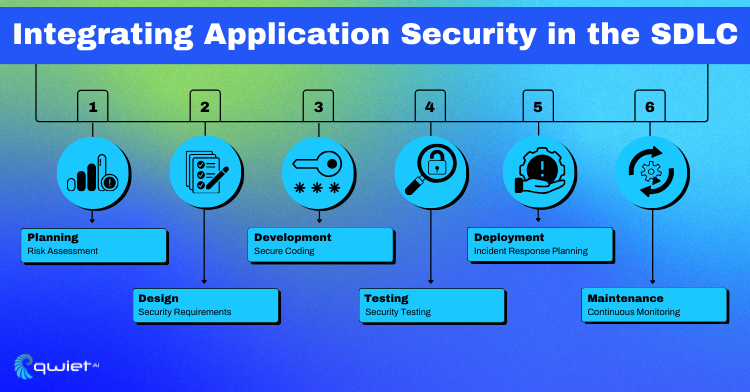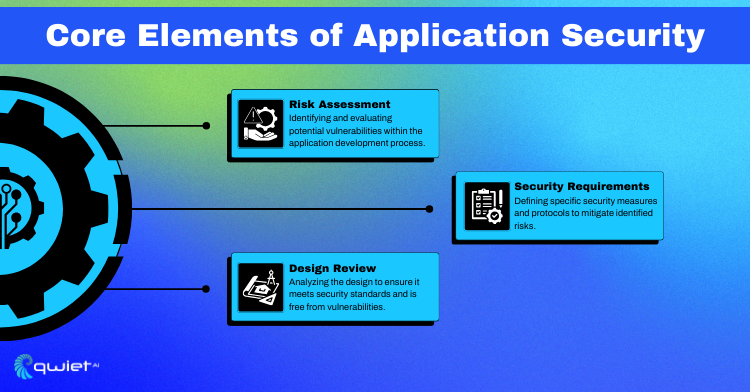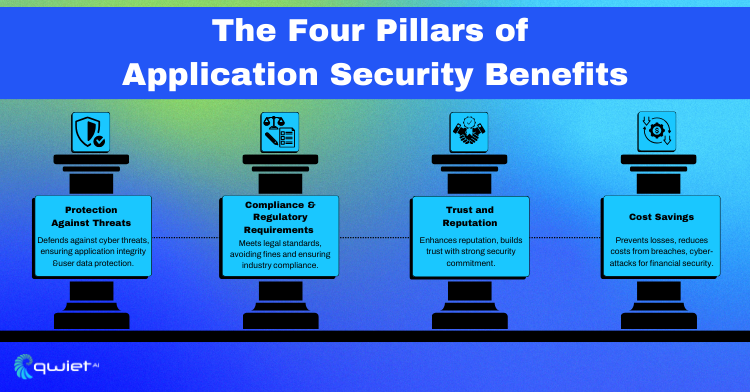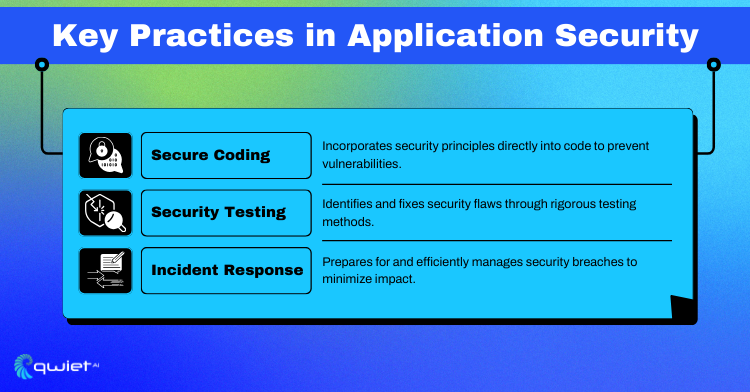Introduction
Have you ever thought about what keeps your apps safe from hackers? That’s where application security comes in – the armor shields software applications from threats at every stage, from design to daily use. This blog will shed light on how application security is woven into the fabric of software development, ensuring that apps remain secure against cyber threats.
What is Application Security?

Application security is about protecting software apps from threats and vulnerabilities. It focuses on keeping apps safe from hackers, ensuring they don’t leak private information or become unavailable to users.
Application security covers everything from when an app is first designed, all the way through to when it’s being used by people every day. This means looking at security at every step of making and maintaining the app, ensuring it’s always protected.
Integrating application security into the software development lifecycle (SDLC) is vital. It means considering security from the start and at every stage of creating an app. This helps find and fix security issues early, making the final app safer. It’s about building security into the app’s foundation so it’s better equipped to resist attacks and protect user data.
Core Elements of Application Security

Risk Assessment:
The first step in application security is risk assessment. This is about figuring out what could go wrong with the security of an app and how likely that is to happen. It helps focus efforts on the most critical areas to make sure the app is as secure as possible.
Security Requirements:
Next, it’s important to define what needs to be done to keep the app safe. This means setting clear security goals and standards the app must meet. Doing this early on guides the design and development of the app to ensure it meets these security standards.
Design Review:
Reviewing the app’s design involves looking at the app’s design to identify potential security weaknesses. Fixing these issues before the app is built can prevent many problems later.
Benefits of Application Security
Protection Against Threats:
Application security guards against various dangers, including common threats and new challenges. It works by finding and fixing app weaknesses, which stops hackers from getting in and causing damage. This layer of security is crucial because it keeps the app working properly, ensures users’ information stays safe and prevents attacks that could interrupt the service.
Compliance and Regulatory Requirements:
Apps often must meet certain legal and regulatory standards, especially concerning sensitive personal or financial data. Application security helps ensure that apps are built and run in a way that meets these standards. This is not just about avoiding legal issues; it’s also about making sure the app is trustworthy and protects user data according to the rules.
Trust and Reputation:
Strong application security can boost user trust and improve a company’s reputation. Users who know an app is secure and respect their privacy are more likely to use and recommend it to others. This trust is vital for any app’s success, as it directly affects user satisfaction and loyalty. A good reputation for security can also set an app apart from its competitors, attracting more users.
Cost Savings:
Taking proactive steps in application security can save a lot of money in the long run by preventing security breaches. The costs associated with a data breach can be enormous, not just in terms of money to fix the breach and potential fines but also in lost business and damage to a company’s reputation. Companies can avoid these costs by investing in application security from the start, making it a smart financial decision.
Key Practices in Application Security
Secure Coding:
Secure coding is all about writing code in a way that keeps it safe from security issues right from the start. It’s about following certain rules and guidelines that help developers avoid mistakes that could lead to vulnerabilities. Focusing on secure coding aims to make apps tough enough to withstand attacks, reducing the chances for hackers to find and exploit weaknesses.
Security Testing:
Security testing is a big part of keeping apps safe. It includes techniques like penetration testing, where testers pretend to be hackers to find weak spots in the app, and code review, where experts go through the app’s code to look for security flaws.
These practices are important for spotting potential security problems before they become real. Regular security testing helps ensure an app stays secure, even as new threats arise.
Incident Response
A plan for what to do if a security issue happens is super important. This incident response plan is a step-by-step guide on handling a security breach, aiming to reduce damage and quickly get things back to normal.
A good plan includes figuring out what went wrong, stopping the immediate threat, fixing the root problem, getting the app up and running again, and learning from the situation to prevent future issues. Being ready with an incident response plan means a company can deal with security problems fast and effectively, keeping the app and its users safer.
Conclusion
In simple terms, application security keeps our apps safe from bad guys and ensures they work as they should. It’s all about ensuring that apps can stand up to threats, protect our info, and keep running smoothly. By focusing on security early and often, businesses can save money, avoid big headaches, and ensure users feel good about using their apps. So, making application security a big part of making apps isn’t just smart—it’s a must-do for anyone who wants their app to succeed and stay safe.
To see how Qwiet can improve application security posture, book a call with our team today.

